
Nazi seaside resort Prora will serve for recreation
Berlin - For 70 years, the giant complex of seaside baths Prora has stood on the German island of Rügen in the Baltic Sea. The Nazi colossus made of concrete never began to serve its original purpose, but after years of decay, part of the complex is expected to soon be used for recreation by young people.
More than four kilometers long, this concrete monstrosity was built between 1936 and 1939 thanks to the Nazi labor movement Kraft durch Freude (KdF; Strength through Joy) and stands just a few meters from the shore of the Baltic Sea. It stretches along the beach near the village of Sassnitz and is comprised of eight identical six-story blocks housing thousands of rooms - all with sea views. However, there is not much shelter from the cold wind in most areas.
The windows lack glass panes, while thick doors are secured with padlocks. The walls inside are soaked with moisture. "There is a lot of work to be done," said Rainer Roloff, head of the Rügen building authority, to the Süddeutsche Zeitung.
The fifth block is to be converted into a youth hostel. Preparatory work has already begun, and by the summer of 2011, the hostel could welcome up to 400 young guests.
Directly outside the windows lies a beach that invites for endless walks. From the top floor, one can see the entire bay of Prorer Wiek. This idyllic scene was chosen by the Nazis for their project Seebad der 20000 (Seaside resort for 20,000). The construction was initiated by Adolf Hitler himself.
In this largest seaside spa complex, workers and their families were supposed to relax. Architect Clemens Klotz planned, in addition to the eight 450-meter-long wings, a gigantic ceremonial hall and swimming pools. For his design, he received the Grand Prix at the World Exhibition in Paris in 1937.
However, the complex was never completed and never hosted any guests. The Nazis did not manage to build swimming pools, solariums, shops, or a hospital before the outbreak of World War II. Prora was used as a training center for armed forces, later as an emergency shelter for people who lost their homes due to bombings, and even later as a hospital. After the war, the site was used by the Red Army and subsequently by the East German National People's Army.
Today, Prora is, alongside the former NSDAP rally grounds in Nuremberg, the largest preserved architectural monument from the Nazi era. Since 1992, the bizarre building has been a protected monument, but the locals do not strongly identify with it. "Not all residents of Rügen see Prora as part of their identity," Roloff confirms.
The huge spaces are still not completely unused today. Over time, artists have discovered the site, and galleries and studios have emerged among the ruins. The Miami nightclub promises "sexy go-go dancers." There is also a private "experience museum." Life-sized mannequins in uniforms represent soldiers of the East German army, and visitors can get their picture taken with their head in the cut-out of a cardboard East German paratrooper.
The hostel is to be built at a cost of more than 16 million euros (421 million crowns) and is to be operated, similar to a campsite in front of the block, by the German Youth Hostel Federation. Other blocks have been sold to investors who presumably want to build hotels or vacation apartments there in the future.
Roloff is also looking for other uses for block number 5. According to his vision, it could house some kind of youth center for the whole of Mecklenburg-Western Pomerania. The conservationist also believes that he will find sponsors who will cover the block with solar panels and turn it into a "model energy project for the future."
More than four kilometers long, this concrete monstrosity was built between 1936 and 1939 thanks to the Nazi labor movement Kraft durch Freude (KdF; Strength through Joy) and stands just a few meters from the shore of the Baltic Sea. It stretches along the beach near the village of Sassnitz and is comprised of eight identical six-story blocks housing thousands of rooms - all with sea views. However, there is not much shelter from the cold wind in most areas.
The windows lack glass panes, while thick doors are secured with padlocks. The walls inside are soaked with moisture. "There is a lot of work to be done," said Rainer Roloff, head of the Rügen building authority, to the Süddeutsche Zeitung.
The fifth block is to be converted into a youth hostel. Preparatory work has already begun, and by the summer of 2011, the hostel could welcome up to 400 young guests.
Directly outside the windows lies a beach that invites for endless walks. From the top floor, one can see the entire bay of Prorer Wiek. This idyllic scene was chosen by the Nazis for their project Seebad der 20000 (Seaside resort for 20,000). The construction was initiated by Adolf Hitler himself.
In this largest seaside spa complex, workers and their families were supposed to relax. Architect Clemens Klotz planned, in addition to the eight 450-meter-long wings, a gigantic ceremonial hall and swimming pools. For his design, he received the Grand Prix at the World Exhibition in Paris in 1937.
However, the complex was never completed and never hosted any guests. The Nazis did not manage to build swimming pools, solariums, shops, or a hospital before the outbreak of World War II. Prora was used as a training center for armed forces, later as an emergency shelter for people who lost their homes due to bombings, and even later as a hospital. After the war, the site was used by the Red Army and subsequently by the East German National People's Army.
Today, Prora is, alongside the former NSDAP rally grounds in Nuremberg, the largest preserved architectural monument from the Nazi era. Since 1992, the bizarre building has been a protected monument, but the locals do not strongly identify with it. "Not all residents of Rügen see Prora as part of their identity," Roloff confirms.
The huge spaces are still not completely unused today. Over time, artists have discovered the site, and galleries and studios have emerged among the ruins. The Miami nightclub promises "sexy go-go dancers." There is also a private "experience museum." Life-sized mannequins in uniforms represent soldiers of the East German army, and visitors can get their picture taken with their head in the cut-out of a cardboard East German paratrooper.
The hostel is to be built at a cost of more than 16 million euros (421 million crowns) and is to be operated, similar to a campsite in front of the block, by the German Youth Hostel Federation. Other blocks have been sold to investors who presumably want to build hotels or vacation apartments there in the future.
Roloff is also looking for other uses for block number 5. According to his vision, it could house some kind of youth center for the whole of Mecklenburg-Western Pomerania. The conservationist also believes that he will find sponsors who will cover the block with solar panels and turn it into a "model energy project for the future."
The English translation is powered by AI tool. Switch to Czech to view the original text source.

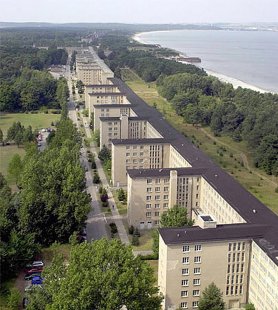
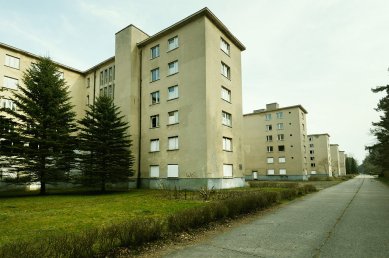
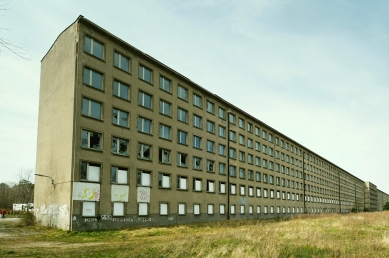

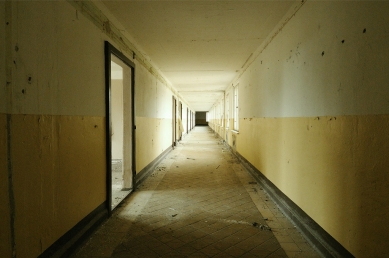

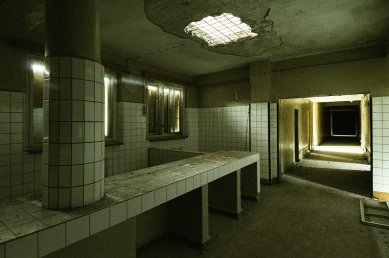

0 comments
add comment












